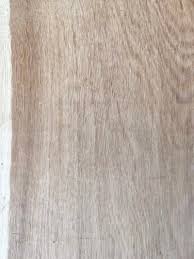
Tiger Oak
Tiger Oak typically refers to English Oak (Quercus robur), a deciduous hardwood native to the UK and much of Europe, when it’s quartersawn to reveal a distinctive “tiger stripe” figuring. These trees grow to 50–100 feet tall with trunk diameters of 3–5 feet, thriving in mixed woodlands or as landscape trees across various soils.
The heartwood of Tiger Oak is a light to medium golden-brown, often with a pale yellowish hue when freshly cut, darkening slightly with age. The sapwood is pale cream, distinctly separate. The “tiger” figuring comes from prominent medullary rays in quartersawn cuts, creating wide, silvery streaks or flakes that resemble tiger stripes against the darker grain, giving a striking, three-dimensional effect. The grain is straight to slightly wavy, with a coarse, ring-porous texture and a moderate natural lustre that enhances the figuring when polished.
Tiger Oak has a density of around 650–750 kg/m³, making it a hard, strong, and durable wood with good stability once seasoned. It’s moderately resistant to decay due to high tannin content but susceptible to insect attack if untreated, best for indoor use unless treated. The coarse grain can cause tearout during planing, and tannins may corrode metal or cause staining if in contact with moisture, but it glues and finishes well, with clear finishes like oil highlighting the tiger stripes.
When worked, Tiger Oak has a mild, oaky aroma with a slight earthy note. In the UK, it’s widely used for furniture, flooring, panelling, and cabinetry, especially in Arts and Crafts or period pieces, where the tiger figuring adds elegance—think dining tables or bookcases. It’s also suitable for structural uses like beams, reflecting its historical role in British carpentry.
Tiger Oak is more expensive than flat-sawn oak due to the quartersawing process, which yields less lumber but maximises the ray fleck pattern. English Oak is abundant in the UK, though challenges like oak processionary moth and acute oak decline can affect supply. Its timeless beauty and cultural significance make Tiger Oak a cherished choice for both decorative and structural projects.
